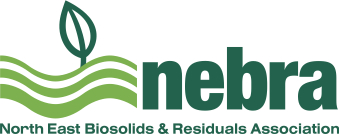8/19/19
Technology Transfer Summaries from WRF and USDA
The Water Research Foundation (WRF) has issued a summary of its more recent biosolids research work. With an estimated 7 million dry tons of biosolids produced each year in the U.S., this research and resulting innovations are critical to improving biosolids management. WRF has been working on biosolids research since the 1980s with over 100 projects and $20 million worth of research into topics including thickening and dewatering, treatment optimization, biosolids quality, beneficial reuse and even risk assessment and communication.
Research highlighted in the WRF summary include:
Treatment and Management
Analysis and Fate of Polymers in Wastewater Treatment
Evaluation of Processes to Reduce Activated Sludge Solids Generation and Disposal
Risk Assessment
Trace Organic Chemicals in Biosolids – Amended Soils: State-of-the-Art Review
Developing Exposure and Toxicity Data for Priority Trace Organics in Biosolids
Biosolids Quality Control and Quality Assurance Procedures: Guidance for Samplers
Communications
A Primer for Biosolids Professionals
A Protocol for the Surveillance and Investigation of the Concerns Reported by Neighbors of Land Application
Resource Recovery
High Quality Biosolids for Wastewater (producing higher quality biosolids project)
Co-Digestion of Organic Waste Products with Wastewater Solids
Intensification of Resource Recovery (evaluation of more than 30 emerging technologies to revolutionize anaerobic digestion)
WRF has related research in the area of anaerobic digestion and odor control. WRF has also developed numerous “tools” including its SMART Biosolids Tool which allows land appliers to gauge potential health effects and determine best conditions for application. WRF’s LIFT Program (Leaders Innovation Forum for Technology) has a Biosolids to Energy Focus Group investigating various technologies including pyrolysis, supercritical water oxidation, hydrothermal liquefaction, and gasification.
Future topics for WRF will include research into technologies to increase digester loading rates, improve dewatering, enhance pathogen reduction and increase production of biogas. For more information, see https://www.waterrf.org/research/topics/biosolids.
In its annual report on technology transfer for fiscal year 2018, the U.S. Department of Agriculture summarizes new inventions and patent applications. USDA reports an increase in both the number of new inventions and patent applications. One such invention by scientists with the Agriculture Research Service in St. Paul, Minnesota, is a system to remove nitrate from contaminated water and concentrate it for reuse as fertilizer. To see the full report, go to: https://www.ars.usda.gov/ARSUserFiles/ott/FY2018%20USDA%20TT%20Rpt.pdf.
